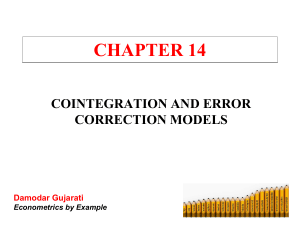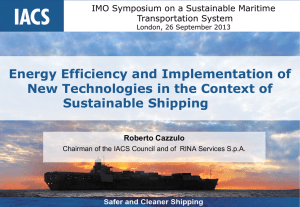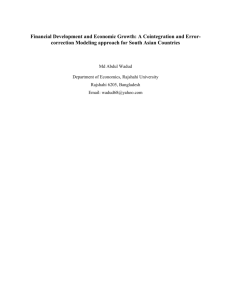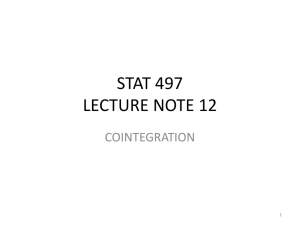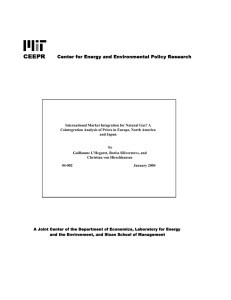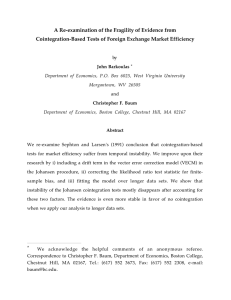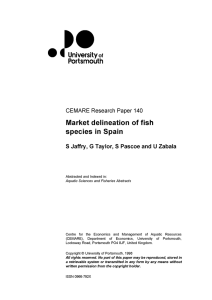Overview - United States Association for Energy Economics
advertisement
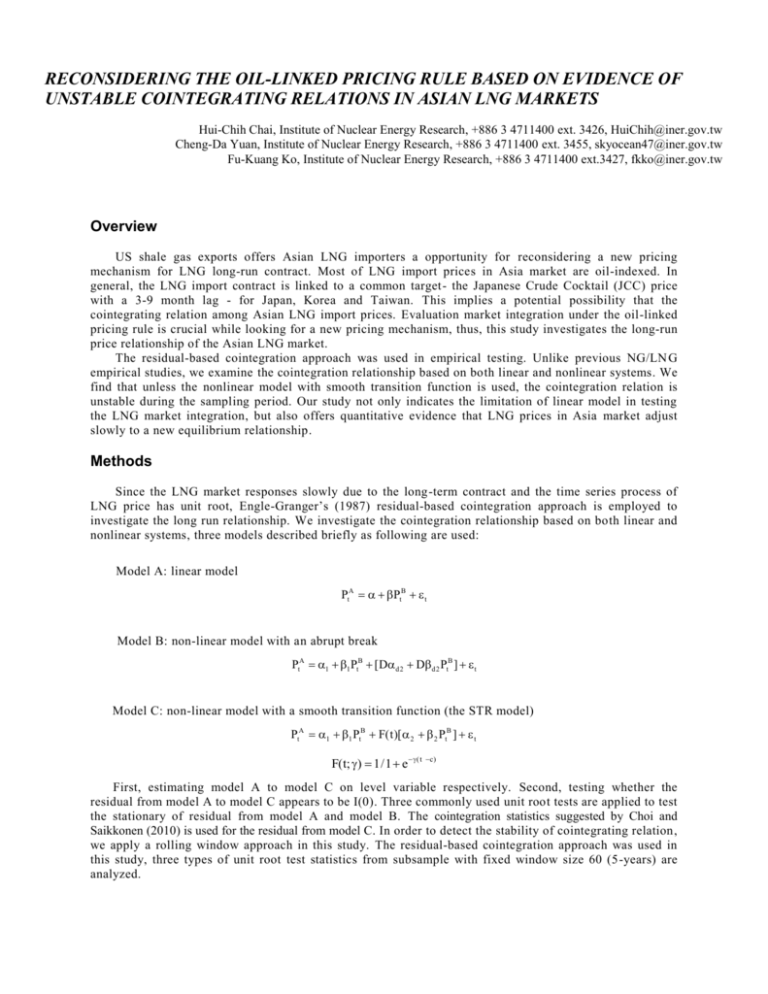
RECONSIDERING THE OIL-LINKED PRICING RULE BASED ON EVIDENCE OF UNSTABLE COINTEGRATING RELATIONS IN ASIAN LNG MARKETS Hui-Chih Chai, Institute of Nuclear Energy Research, +886 3 4711400 ext. 3426, HuiChih@iner.gov.tw Cheng-Da Yuan, Institute of Nuclear Energy Research, +886 3 4711400 ext. 3455, skyocean47@iner.gov.tw Fu-Kuang Ko, Institute of Nuclear Energy Research, +886 3 4711400 ext.3427, fkko@iner.gov.tw Overview US shale gas exports offers Asian LNG importers a opportunity for reconsidering a new pricing mechanism for LNG long-run contract. Most of LNG import prices in Asia market are oil-indexed. In general, the LNG import contract is linked to a common target- the Japanese Crude Cocktail (JCC) price with a 3-9 month lag - for Japan, Korea and Taiwan. This implies a potential possibility that the cointegrating relation among Asian LNG import prices. Evaluation market integration under the oil-linked pricing rule is crucial while looking for a new pricing mechanism, thus, this study investigates the long-run price relationship of the Asian LNG market. The residual-based cointegration approach was used in empirical testing. Unlike previous NG/LN G empirical studies, we examine the cointegration relationship based on both linear and nonlinear systems. We find that unless the nonlinear model with smooth transition function is used, the cointegration relation is unstable during the sampling period. Our study not only indicates the limitation of linear model in testing the LNG market integration, but also offers quantitative evidence that LNG prices in Asia market adjust slowly to a new equilibrium relationship. Methods Since the LNG market responses slowly due to the long-term contract and the time series process of LNG price has unit root, Engle-Granger’s (1987) residual-based cointegration approach is employed to investigate the long run relationship. We investigate the cointegration relationship based on both linear and nonlinear systems, three models described briefly as following are used: Model A: linear model PtA PtB t Model B: non-linear model with an abrupt break PtA 1 1PtB [ Dd 2 D d 2 PtB ] t Model C: non-linear model with a smooth transition function (the STR model) PtA 1 1 PtB F( t )[ 2 2 PtB ] t F( t; ) 1 / 1 e ( t c) First, estimating model A to model C on level variable respectively. Second, testing whether the residual from model A to model C appears to be I(0). Three commonly used unit root tests are applied to test the stationary of residual from model A and model B. The cointegration statistics suggested by Choi and Saikkonen (2010) is used for the residual from model C. In order to detect the stability of cointegrating relation, we apply a rolling window approach in this study. The residual-based cointegration approach was used in this study, three types of unit root test statistics from subsample with fixed window size 60 (5-years) are analyzed. Results Monthly LNG import prices of the major LNG-importing countries in Asian, including they are Japan (JPN), South Korea (KOR) and Taiwan (TWN), are used in empirical investigation. The integration relationship is analyzed for the period from 2002 to 2011. Our empirical results show that the cointegration relationship based on the linear model and the nonlinear model with an abrupt break are unstable (see Fig.1 and Fig.2). Furthermore, a nonlinear model with the smooth transition function (the smooth transition regression model, the STR model) captures the nonlinear cointegrating relation better than the others. KOR TWN Fig. 1. Rolling window analysis of unit root test on OLS residuals. KOR TWN Fig. 2 Rolling window analysis of unit root test on Dummy regression residuals. KOR TWN 2.5 2.5 5% CV 2.0 5% CV 2.0 10% CV 10% CV 1.5 1.5 1.0 1.0 0.5 CNLLS test statistics 0.5 CNLLS test statistics . 0.0 0.0 5 10 15 20 25 30 35 40 45 5 10 15 20 25 30 35 40 45 Fig. 3 Rolling window analysis of unit root test on STR residuals. Conclusions Our empirical results show that the cointegration relationship obtained using a linear assumption is unstable. The linear model is limited when examining cointegration in LNG prices when potential structural changes are occurring in the LNG market. By contrast, we can use a nonlinear model with the smoot h transition function to show that a cointegration relationship exists in the Asian LNG market. We found strong evidence of price relationships with regime changes during the period of global economic crisis. Furthermore, the price relationship tended to adjust smoothly rather than change abruptly. The import prices did not converge to the LOP, which implies that LNG suppliers still have an excessive amount of power over the market. This problem can be alleviated if, as suggested by the IEA, a trading hub provides price signals based on supply and demand in the Asian market. A trading hub can improve information disclosure, which can benefit buyers or sellers who have low negotiation strength. Furthermore, an integrated energy market may considerably help po or countries in catching up with rich countries in economic growth (Sheng and Shi, 2011).




